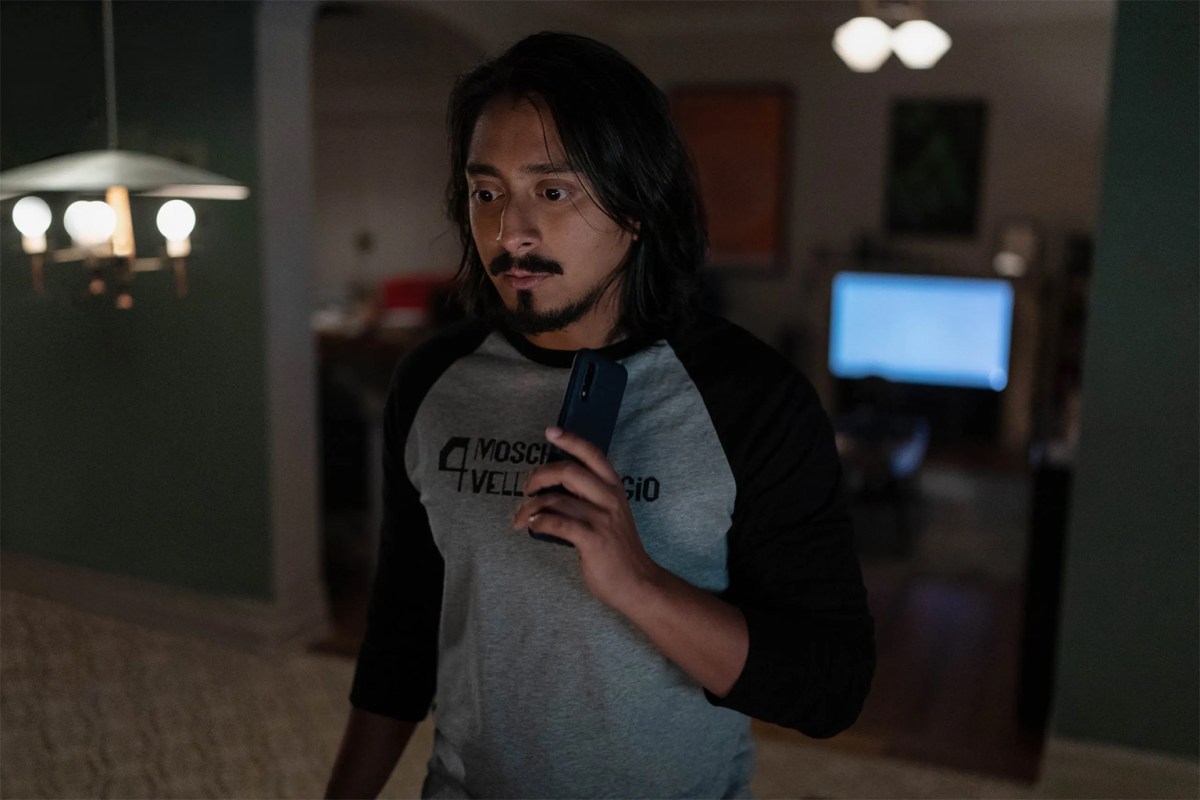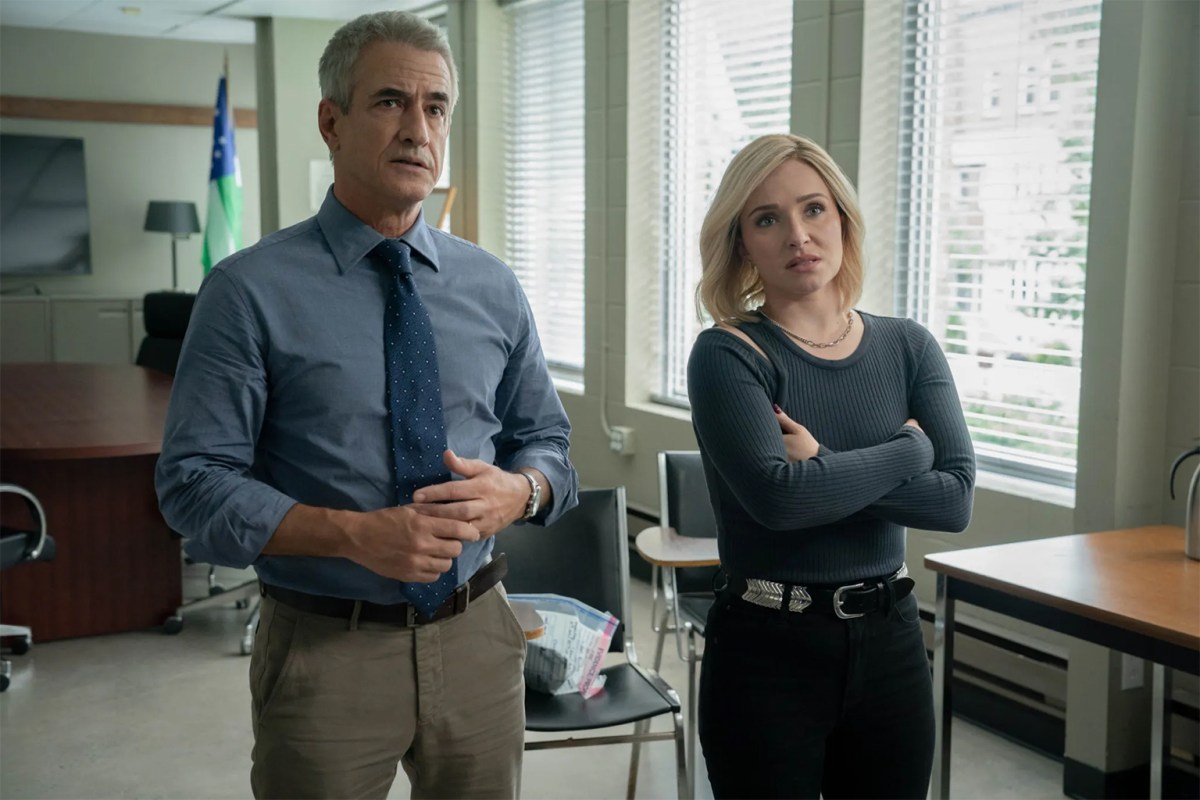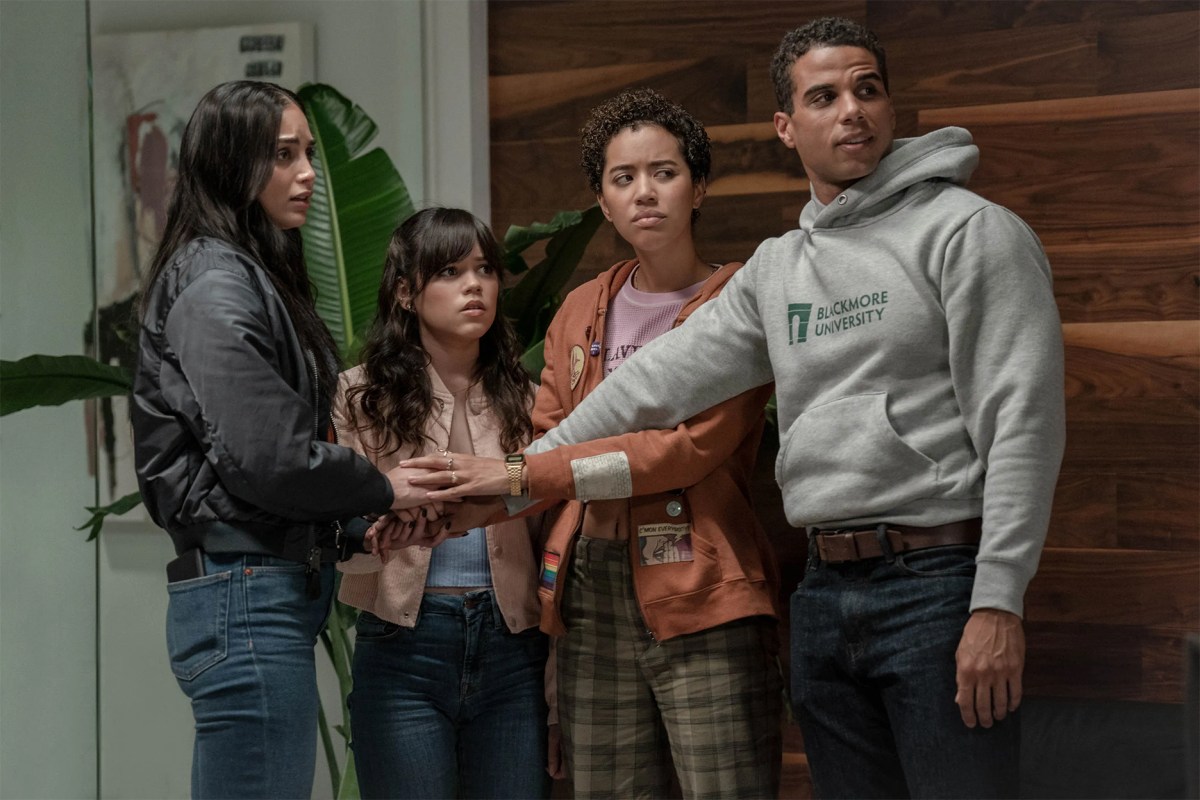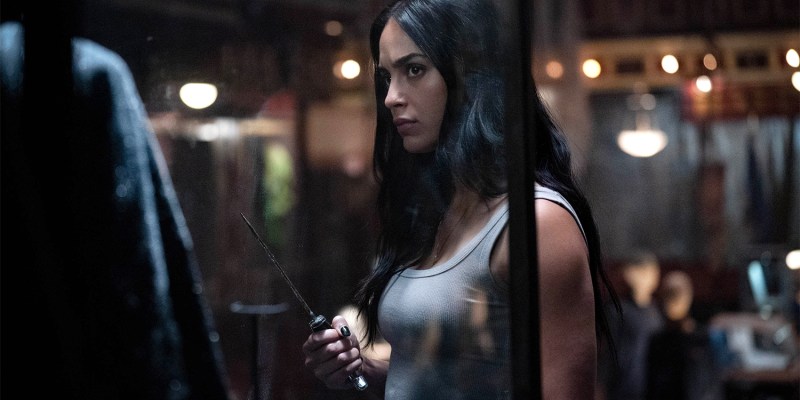This article contains spoilers for Scream VI.
In a literal sense, Scream VI is a very bloody slasher movie. There are lots of stabbings. There is a lot of gore. There is some wonderful prosthetics work. Anika Kayoko (Devyn Nekoda) has to hold her spilling guts in as she tries to navigate a ladder bridge between two high-rise apartments. Dr. Christopher Stone (Henry Czerny) gets stabbed through the nose. Jason Carvey (Tony Revolori) finds a dismembered body in his fridge. There was a lot of fake blood used in the film’s production.
In another way, Scream VI is a surprisingly bloodless slasher movie. It lacks the killer instinct that makes slasher movies so compelling and exciting. Although directors Matt Bettinelli-Olpin and Tyler Gillett craft effective individual set pieces that generate suspense, there’s never any real tension within the movie itself. The audience understands that Scream VI is never going to kill off a character in whom the audience has any meaningful emotional investment. There are no stakes.
Halfway through the film, when Mindy Meeks (Jasmin Savoy Brown) provides the obligatory exposition dump about the particular kind of movie that the killer is making, she argues that they are part of a larger franchise now. Scream VI, Mindy contends, is not a “sequel” like Scream 2, part of a “trilogy” like Scream 3, “less of a shriek-quel and more of scream-ake” like Scream 4, or even a “requel” like Bettinelli-Olpin and Gillett’s Scream (2022). To Mindy, it’s just a generic franchise installment.
While Mindy is correct about this, she demonstrates a staggering lack of understanding about how these sorts of movies actually work. She warns the other survivors from the previous film — Sam (Melissa Barrera) and Tara Carpenter (Jenna Ortega), along with her twin brother Chad (Mason Gooding) — that the rules of modern franchising make existing characters expendable. According to Mindy, Gale Weathers (Courteney Cox) isn’t safe just because she lived through five Scream movies.

To be fair, Mindy doesn’t make this argument because it’s true. She makes the argument because Scream VI needs to convince its audience that there are dramatic stakes. After all, it’s no fun to watch a slasher movie knowing that none of the primary characters will ever be placed in any serious jeopardy. Mindy’s statement isn’t an actual piece of criticism or commentary. It is just a way to create the illusion of tensions, to bluff the audience into thinking that established characters might die.
In reality, modern franchise media is extremely protective of existing characters and actors. The third season of Star Trek: Picard is a reunion of the original cast of Star Trek: The Next Generation, a direct contravention of Patrick Stewart’s claims that he didn’t want the show to become empty nostalgia. Star Wars preserves Mark Hamill’s performance as Luke Skywalker through uncanny visual and aural effects on both The Mandalorian and The Book of Boba Fett.
Even within the horror genre, long-running franchises have become increasingly nostalgic about returning cast members. David Gordon Green’s recent Halloween trilogy was a showcase for Jamie Lee Curtis. Green is also overseeing a long-delayed Exorcist sequel that will mark the return of Ellen Burstyn. These horror series have become high-profile and hugely profitable brands unto themselves, and so they adhere to the same internal logic of any other major franchise.
So Scream VI treats its returning cast members with kids’ gloves, as if worried that killing off any returning character might spark some online fan backlash. The film even resurrects fan-favorite Kirby Reed (Hayden Panettiere) from Scream 4. Kirby was pretty brutally stabbed by Charlie Walker (Rory Culkin), and there was no indication in the movie’s hospital-set climax that she survived. However, the next film included an Easter egg reference to her, and she returns in the flesh in Scream VI.

With six returning survivors from previous films, the law of averages suggests Scream VI should be able to kill at least one of them. After all, that’s how previous Scream films operated. Randy (Jamie Kennedy) died a brutal death in Scream 2, Cotton Weary (Liev Schreiber) died in the opening scene of Scream 3, and even Dewey Riley (David Arquette) got a heavily telegraphed sending-off in the franchise’s fifth film. Scream VI is overflowing with returning characters waiting for a cull.
This is how long-running horror series used to work, before they got all gussied up and respectable. In older slasher movies, the survivors frequently returned to get killed off. Nancy (Heather Langenkamp) was the final girl in A Nightmare on Elm Street, but she was Freddy fodder in A Nightmare on Elm Street 3: Dream Warriors. Laurie Strode (Curtis) returned to the Halloween franchise in Halloween H20 but was killed off in the introduction to Halloween: Resurrection.
This process was self-perpetuating, where these franchises would cycle through leading characters, creating a sense that the audience should never get too attached. Rachel (Ellie Cornell) survives Halloween 4: The Return of Michael Myers but dies early in Halloween 5: The Revenge of Michael Myers. Kristen Parker (Patricia Arquette) is the lead of A Nightmare on Elm Street 3: Dream Warriors, then is recast (Tuesday Knight) and killed off in A Nightmare on Elm Street 4: The Dream Master.
Scream VI makes a couple of gestures towards killing off returning characters. During a tense subway sequence, Mindy is brutally stabbed and left bleeding out on the floor of a carriage. However, she survives thanks to the intervention of Ethan Landry (Jack Champion), a twist that makes no sense with the subsequent revelation that Landry is one of the killers. Why would he help her? He may not want to blow his cover, but why not simply disappear from the train car in the confusion?

There are a couple of other even more overt gestures towards brutality, which have the sense of bold choices that may have been pulled back in post-production for fear of fan backlash. At one point, Gale is attacked by the killer. She is brutally stabbed, although the killer is scared away before he can finish her off. As she lies bleeding out, she begs Sam, “Tell Sidney he never got me.” It’s a sweet moment, a fitting end for Gale Weathers, writing her own somewhat flattering epitaph.
However, there’s a very late line thrown into the audio mix from one of the paramedics that arrives on site, declaring that they found “a weak pulse.” At the end of the film, in scenes that notably don’t include Cox, characters report that the hospital has stabilized Gale and that she will pull through. It is a way of reassuring viewers that Cox will return for Scream 7, which was helpfully reported to be in development before Scream VI even opened.
There is a similar moment towards the climax, in which Chad is ambushed by a pair of knife-wielding killers. Scream VI plays this as a heroic moment of self-sacrifice, with Chad’s death buying Sam and Tara enough time to get away. It’s very heavily telegraphed and melodramatic, recalling the death of Dewey in the previous film, lacking the nastiness of the best slasher movie kills. Even then, the film’s closing moments reveal Chad survived. He is wheeled out on a gurney, breathing.
There is something frustratingly cowardly about all this, reflecting the larger trend in modern pop culture that has found franchises unwilling to allow established characters and actors to ever truly move on. It’s both a reflection and a cause of pop culture’s nostalgia fixation, a reluctance to let these long-running franchises ever truly move on. There is a broader discussion to be had about how this approach stunts properties like Star Trek or Star Wars.

However, it’s particularly frustrating in the context of a long-running slasher franchise, and it demonstrates the perils of trying to bend this sort of horror movie model towards the conventions and internal logic of larger crowd-pleasing storytelling. Part of the appeal of slasher movies like Scream, Halloween, and A Nightmare on Elm Street is how nasty and unpleasant they are. They don’t make the audience feel good. Horror should be unsettling and discomforting. They should be grubby.
Scream VI is too polished and too sleek for its own good. It’s too worried about potentially alienating fans by killing off popular characters — too worried that murdering Gale, Mindy, or Chad will provoke the kind of online outrage that the previous film parodied with Richie Kirsch (Jack Quaid). It’s a movie that feels like checking in on the episodic adventures of old friends, which is the opposite of what a properly brutal slasher movie should feel like.
Part of the problem is that, on some level, the audience understands this. The problem with Scream VI is just an escalation of the problem with the previous movie. Tara, Mindy, and Chad all survived brutal stabbings in the previous film, and at least two of them probably should have been killed off for dramatic effect. The training wheels are still on and the bumpers are still up. It feels like the recent Scream movies are patronizing the audience, unwilling to genuinely shock them.
It feels a little frustrating that Scream VI lacks a true killer instinct.
